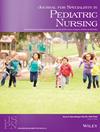Sexuality education for school-aged children and adolescents: A concept analysis
Abstract
Purpose
Sexuality education is essential for children and adolescents to make better choices regarding their sexual well-being. Parents, teachers, and healthcare providers are not always comfortable talking to school-age children about sex, making sexuality education a concept of interest to be explored. The purpose of this paper is to explain the concept of sexuality education in school-aged children and adolescents.
Design and Methods
This paper uses Walker and Avant's concept analysis to help clarify its meaning. The sexuality education concept is explored in this article in the views of educating school systems K-12 with three types of sexuality education (abstinence-only, abstinence-plus, and comprehensive sexuality education). Literature from 1990 to 2023 was retrieved using PubMed, Google Scholar, and CINAHL.
Results
A model case is used to demonstrate the importance of sexuality education. A borderline case and a related case are proposed to explain other uses of the concept. Defining attributes, antecedents, consequences, and empirical referents are explored. Antecedents of sexuality education are grouped into three categories: resources, political environment, and social beliefs.
Practice Implications
A conceptual understanding of sexuality education can foster nurses' confidence in talking to their patients about this topic and encourage nurses to advocate for comprehensive sexuality education nationwide.

 求助内容:
求助内容: 应助结果提醒方式:
应助结果提醒方式:


